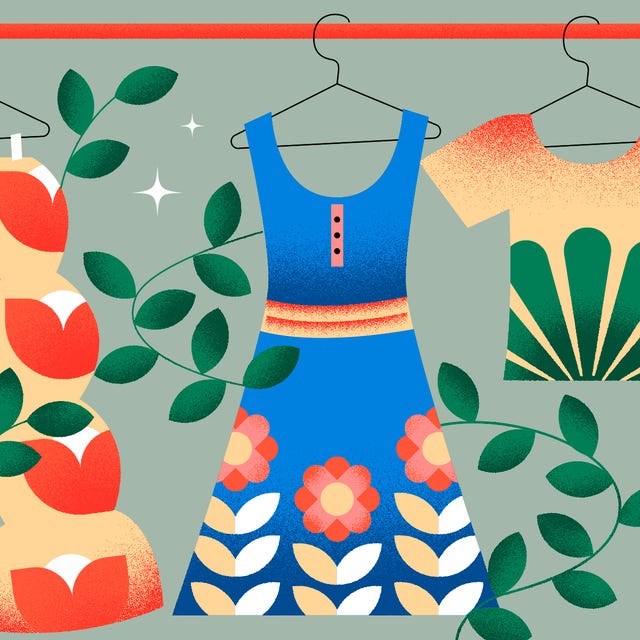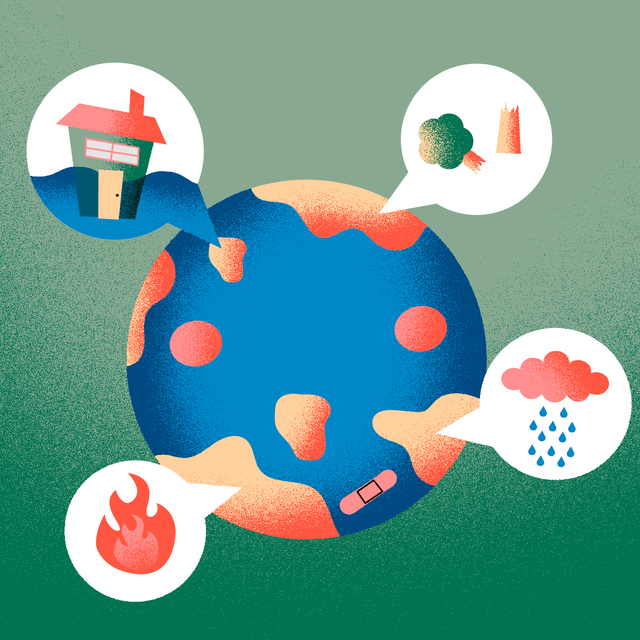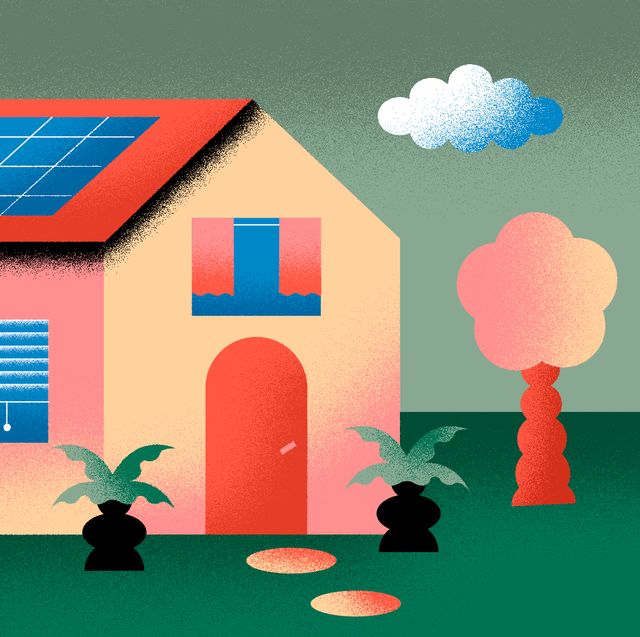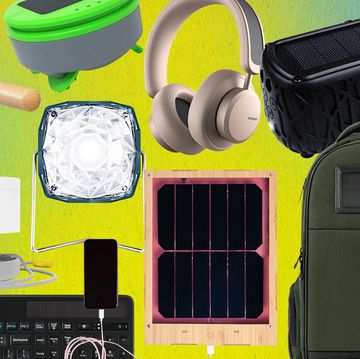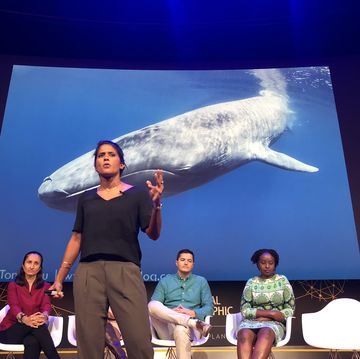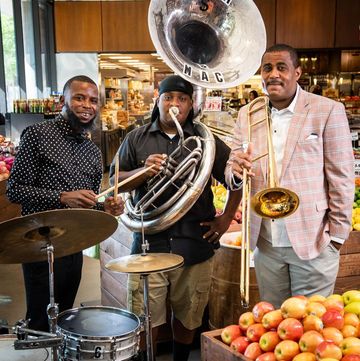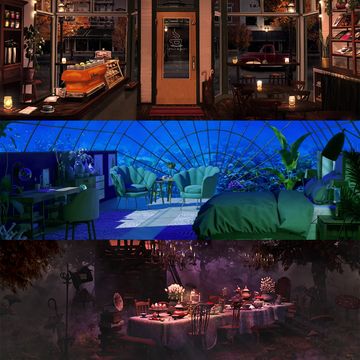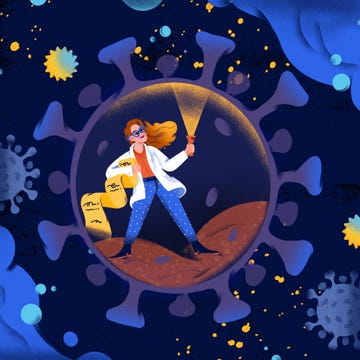When it comes to climate change, we’re inching dangerously close to the point of no return. This is what the world’s climate scientists have been saying for more than a few years. But since the problem is so vast, it’s easy to blow it off, burying your head in the sand and hoping it goes away on its own. So we wanted to offer some helpful tips on what you can do in your daily lives to put a dent in the climate change crisis. We hope to shed some light on the urgency of the problem through thoughtful deep dives that explore the systems and industry practices that exacerbate the problem and explore their social and ecological impacts. Within the series, you might also find some inspiring ways you can start to help make Earth more green and, hopefully, begin to turn back the clock on climate change.
The thought of taking on climate change as an individual — just a “regular” person who enjoys little luxuries like a strong cup of coffee in the morning, or a hot shower at the end of the day — can be overwhelming.
That’s because for many Americans, when you add up the little luxuries like coffee and hot showers that make up even the most average of our days, and multiply them by the current population of over 329 million, the resulting toll on the environment seems astronomical.
The Environment: A Shondaland Series
Calculations by the Water Footprint Network (a non-profit dedicated to helping companies, organizations and individuals collectively solve the world’s water crisis) estimate that it takes about 34 gallons of water to produce a single cup of coffee.
If even one out of every four Americans (roughly 82 million people) had a cup of coffee today, then will have used 2.8 billion gallons of water. Multiply that by a week, a month, or even a year and then the trillions of gallons of water involved don’t even really register in our brains — let alone allow us to think about making a difference. (And let's not even get into the amount of potential water and energy waste that comes with our desire for hot showers).
It’s enough to induce eco-anxiety, or a “chronic fear of environmental doom” in anyone, but we can’t afford to let the scale and scope of the challenge paralyze us into inaction.
Still, getting everyone to give up their daily java fix isn't exactly realistic. The good news? New developments in green technology can help offset the environmental impact of those cups of coffee, along with many other choices we make when it comes to what we consume.
The new wave of green technology is hyper-personal
“Green technology” is loosely defined as the use of science and technology to develop products, services, and processes that are more environmentally friendly than their predecessors — as well as helping to repair damage that has already been done.
The green tech industry encompasses everything from massive, industrial windmills and solar farms that generate power for entire cities, to those charming little solar-powered LED string lights that keep showing up in your Instagram feed.
It’s a lucrative market — to the tune of nearly $12 billion in 2018 in the U.S. — and money continues “gushing into” bonds, funds and companies that can demonstrate how they’re using technology and innovation to achieve specific environmental or social targets.
Interest in these so-called environmental, social and governance (or ESG) funds and other investment vehicles has increased over the past 10 years, but if the first decade of real growth in green tech focused on macro, infrastructural issues like powering neighborhoods and corporate office parks, the new wave is focused on startups that help people make environmental progress on a more personal basis.
Last year, big partnerships between meatless, protein-based burger brands like Impossible Burger and fast food staples like Burger King seemed to highlight the convergence of two environmentally-focused trends: While more people were making the connection between their health, the environment, and the amount of animal-based food products they consumed, we were also able to reap the rewards of previous innovation (and investment) in making “greener” food look and taste more appealing.
Food tech (and activism) isn’t about anarchy — it’s about building a sustainable future
The significance of meatless burgers becoming mainstream in America, the birthplace of mantras like “Beef: It’s What’s for Dinner” can’t be overstated. Greenhouse gas-emitting industrial meat and agricultural norms are intertwined in everything from our individual diets, to our public school lunch plans, to the legislation around what kinds of food can (and cannot) be grown at home.
Not long ago, asking for vegetarian snacks at schools or workplaces, or expecting chains like Dunkin’ Donuts to carry almond milk, would’ve been considered borderline anarchistic. Or at least just hippie dippy.
But as Major Dream Williams, co-founder and Chief Agripreneur of Metro Farms Puerto Rico notes: “You don’t have to be a crunchy granola person to make a difference in the environment, or even your own diet. You can start with your own garden, or look for sustainable alternatives close to home, like microfarms.”
Founded in late 2019, Williams and the Metro Farms Puerto Rico team are on a mission to use sustainable farming technology and educational content to transform the way Puerto Rico’s more than 3.1 million inhabitants eat. It’s a mammoth task, given that despite having a lush, temperate climate and lots of verdant space, Puerto Rico was importing upwards of 85 percent of all its food in 2018.
So Metro Farms Puerto Rico is taking it one step at a time — starting with a collective of microgreen farms.
What’s a microgreen farm?
A microgreen microfarm or “metro farm” is a farm that can thrive and produce food in a small space like a rooftop, a tiny backyard or even half of an abandoned warehouse. Typically located in urban areas, microgreen farms produce small plants like baby greens, endive and kale that take just two weeks to go from seed to harvest.
The produce is often grown hydroponically (meaning in water, with no soil), aquaponically (using water that’s inhabited and fertilized by fish), or aeroponically (with no soil and no container of water — just mist); and sold at a local farmer’s market or to a restaurant the same day that it’s harvested.
A sustainable microfarm will employ various types of green technology and techniques to use less energy, create less waste and be more cost-effective to run than a traditional farm.
Metro Farms Puerto Rico, for example, works to reduce its environmental impact across three fronts: Repurposing open space by growing microgreens on vacant rooftops, using a renewable growing medium called coconut coir that’s made out of coconut husks, and even using small wind turbines to turn the exhaust generated by the farm’s HVAC system (which regulates temperatures), into an alternative source of energy for the entire building.
And while these kinds of green tech-enabled farms are not going to produce tons of food, the sustainable, community-oriented vibe is kind of the point.
“This is not about building the next generation of AgTech,” Williams said. “It’s about helping people produce enough food to support their neighbors and businesses in their zip code. It’s not anti-capitalist, but it’s supporting a shift in people’s mindsets toward eating and living well in harmony with the environment versus at the expense of it.”
The rise of personal agroecology
Yet there’s an even more personal and sustainable food choice one can make than grabbing some microgreens from the local farmer’s market. It’s called growing your own.
That’s the purview of Austin-based Gardenio, a startup that at first glance may be one of the most millennial-sounding, first-world problem solving green tech companies out there: It’s a sustainable subscription food gardening service, complete with an app that tells you when and how to to water your plants.
Gardenio Founder and CEO Roman Gonzalez acknowledged the company’s millennial sweet spot, pointing to a Garden Research survey that found that males in the 18-34 age range were among the gardening industry’s fastest-growing demographics.
“The gardening landscape was already changing,” Gonzalez said, “But I think food shortages during COVID have definitely made more people think about where more of their food is coming from.” Indeed, searches for topics like “growing vegetables from scraps,” “local food,” and “local farms,” increased in the midst of the U.S. lockdown.
Still, to a novice (or just a city slicker with a sliver of a fire escape … let alone a backyard) growing your own food can seem daunting. That’s because raising a healthy food garden requires five elements: Space, weather or climate control, time, money, and knowledge or acumen.
Gardenio aims to help the “garden-curious” feel more empowered and in control of those elements, so the monthly subscription kit includes everything you need to grow small kitchen staples like basil, lavender or oregano. In addition to seeds, containers, soil and mulch, the subscription also includes access to plant counselors through the app that let you trade pictures, get advice and diagnose potential plant issues.
What’s the basic cost? Gardenio’s kits start at three plants for $75, and then $45 for a new plant each quarter. Annually, that comes out to just over $200, which you could easily spend on a few plants, planters and fertilizer in one Home Depot run.
It’s not just about the cost, though, as Gonzalez notes — getting people to start growing even a single plant on their own is a direct connection to living more sustainably. “When you see the effects of weather on your own plants, you’re able to make that bigger connection to how droughts or heat waves affect entire farms,” Gonzalez said. “This big macro issue of climate change and sustainability becomes more personal.”
Indeed. And what’s inspiring and hopeful about startups like Gardenio and Metro Farms Puerto Rico, is that they’re part of the broader trend of making agroecology — or the practice of farming and producing food in more socially, economically and environmentally sustainable ways — something more intimate and actionable on an individual level.
As a result, consumers can feel like they're part of the solution, not the problem, alleviating eco-anxiety and inspiring further lifestyle changes. Throw in some composting with your sustainable gardening subscription service, and you're taking some substantial action toward bettering the planet. Little by little, it adds up.
Tameka Kee curates unforgettable experiences and thought-provoking conversations at the intersection of advertising, technology and culture. Find her on Twitter @geekychic
Get Shondaland directly in your inbox: SUBSCRIBE TODAY

